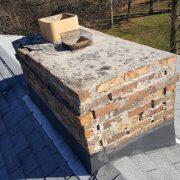Ways to Restore Your Chimney
A beautiful and operational fireplace tops the list of many home buyers today and for good reason. Not only does it save on heating costs in the winter, it is a central focal point that connects the living space with the home. And whether you are remodeling an older home or renovating a fixer upper, you shouldn’t cut corners when restoring the fireplace and chimney.
Chimney and Fireplace Inspection
The first step is to have a professional chimney sweep conduct a thorough inspection of the chimney and fireplace. Some problems of older chimneys are easy to spot like missing or spalling bricks. Other issues like water leaks and prior internal damage from a chimney fire may not be so obvious. The chimney technician will be able to uncover the necessary repairs that will need to be made to make the fireplace and chimney safe and operational again. Even if the fireplace has been operational, an inspection is vital in mitigating the potential risk of fire and exposure to carbon monoxide. The list of repairs and issues that will need to be corrected will help guide your restoration process. A chimney inspection is a small investment that will pay dividends in saving you time, money and frustration. It will also help you avoid making unnecessary repairs while providing invaluable advice for a more efficient chimney restoration process.
Restoring the Chimney
The chimney is the highest point in a home and is constantly exposed to rain, snow, and other elements. The deterioration of brickwork, mortar, and masonry increases the risk of smoke and toxic fumes seeping into your home. Also, the structural integrity of the chimney may be compromised, and you may face the risk of an entire collapse. Restoration and repairs should only be completed by qualified chimney repair specialists. A chimney restoration process may include:
- Masonry repair
- Replace missing bricks and mortar
- Repair spelled bricks and mortar joints
- Clean and repair firebox
- Repair or replace the damper
- Repair or replace flashing
- Repair or rebuild the crown
- Repair or replace liner
- Repair or replace cap
- Repair or rebuild firebox
- Custom surround and mantle
Install a Chimney Liner
Many chimneys in older homes built before 1970 do not have a chimney liner. And although modern building codes require liners, you may still encounter a chimney in an old home that isn’t up to code. The chimney liner is an added layer of protection containing the high heat inside the chimney. The liner absorbs the heat preventing it from spreading to nearby combustible materials, like the wood frame, wiring and insulation. Liners also improve the heating efficiency of the fireplace, prevent toxic fumes from seeping into your home and help to extend the life of the masonry and brick work in the flue. UL listed steel liners are the most durable and offer the best performance. There are also clay and cement liners available as well.
Consider Installing a Fireplace Insert
Many homeowners today are restoring old fireplaces with an insert. EPA-certified fireplace inserts are pre-fabricated self-contained heating appliances that fit directly inside a traditional fireplace. They can shave thousands of dollars off the restoration cost while providing the same look and feel of a traditional fireplace. Energy efficient fireplace inserts are also up to 90% more efficient making them a favorite among environmentally conscious consumers. There are also vent free models that do not require a chimney making them an option for any room in the home. Fireplace inserts are often preferred when converting from a wood-burning fireplace to gas, pellet or electric. There are many beautiful and stylish inserts to choose from that will create the desired appearance for any living space.






